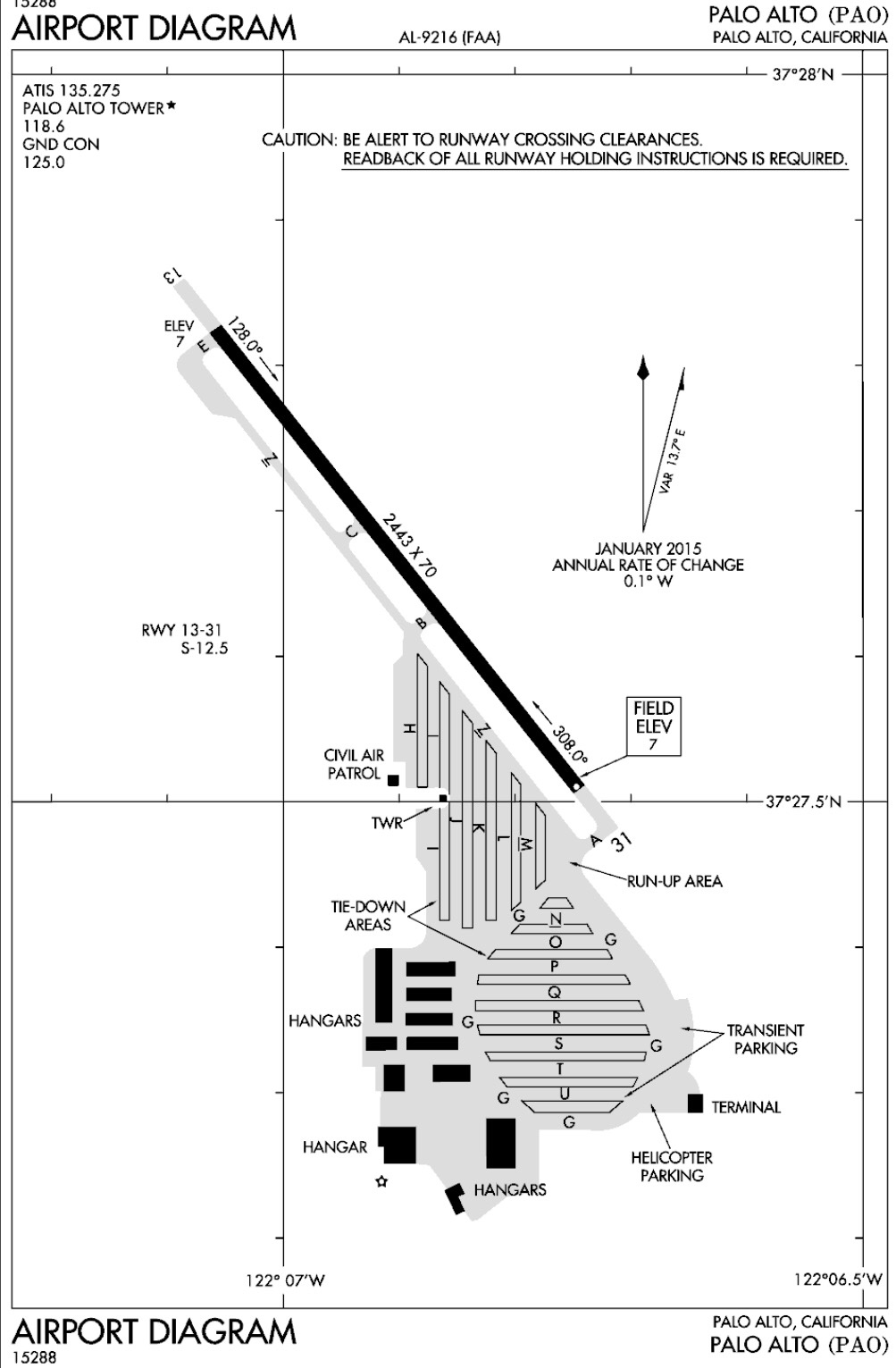I post this so that others may learn from my stupidity.
Yeah, I f***d up. Pretty embarrassing. My first time at KPAO. I was departing IFR. After run-up I pulled up to the hold short and reported that I was at hold short for rwy 31 ready for departure.I I was told to hold for IFR release, which I did. I watched a light sport do a touch n go, then come back and do another, and then another.
Now I have two planes waiting behind me, the LS doing another TnG lap, and a Mooney inbound. KPAO is a busy little airport. Tower told me to "pull up and hold short on rwy 31". I read back the exact same words. The rwy has an approach apron, but it's pretty short. That light sport was on short final. I was about 10 ft from the hold short line (which is about how far I usually hold short) and started inching forward. I honestly thought he was telling me to "line up and wait" (yeah, I know, he didn't use those words, hence my mistake) I felt like it wasn't a good idea for me to line up and wait, and because of that, I was inching slowly forward, but I crossed the line by at least half my plane length. The tower urgently told the light sport to go around, (as he was about to cross the fence) and I slammed on the brakes. (Well, 'touched' would be a better word, as I wasn't moving very fast at all.
The light sport went around, and the tower had me taxi down the runway and exit at the first taxiway and contact ground, who gave me a number to call for "possible pilot deviation". I opted to wait until I got home, since the winds were expected to become more turbulent in the afternoon. (It was around 1245 PST) I called them when I got home, and they just took my name. I admitted that I misunderstood his instructions, because I was already at the hold short line, but that it was my fault, which, honestly, it was.
The worst part was that my wife was in the plane with me.
Flame me all you want, I deserve it. In retrospect, I should have just asked the tower to clarify, although he was busy giving instructions to the inbound Mooney at the moment. Still my fault though. Seeing as how I didn't think there was enough room for me to be on the approach end of the runway (that runway is only 2400 ft) I just shouldn't have gone there, regardless of what the controller was doing.
Safety is the PILOT's responsibility, not the controllers. And I should have remembered that.
So, what do you think the FAA has in store for me?




